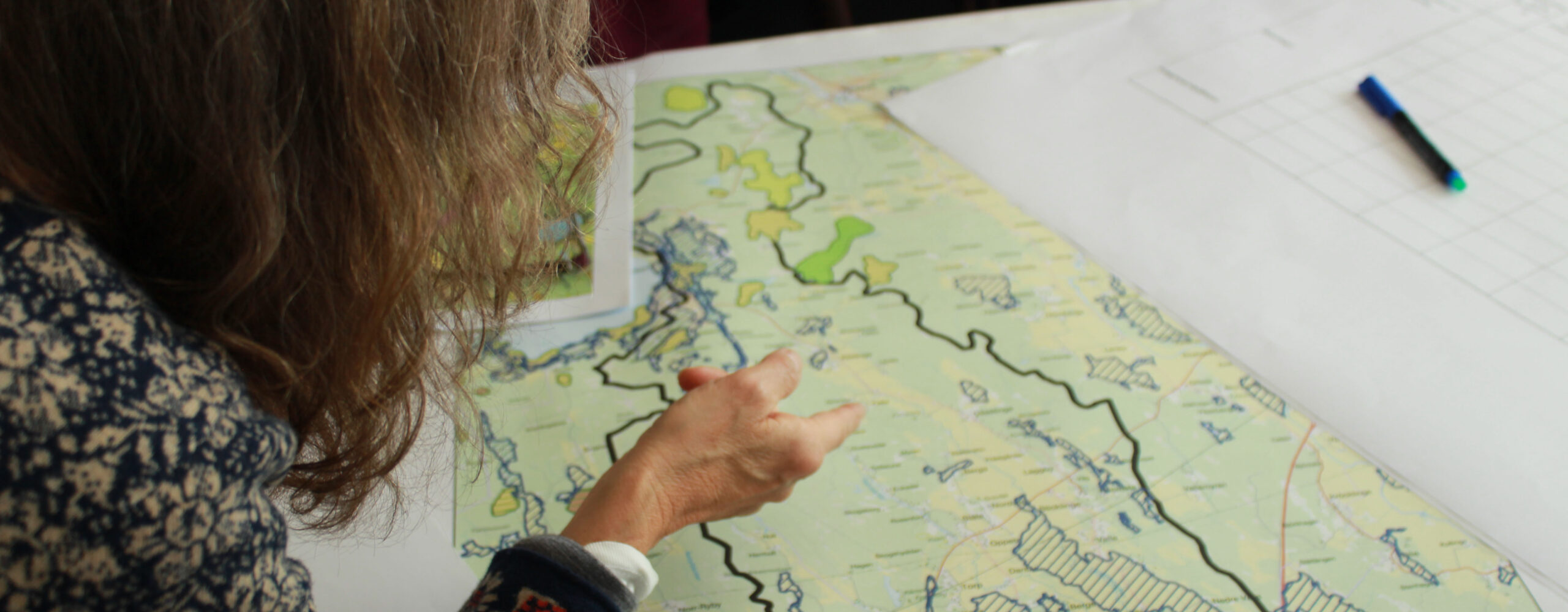Start > Themes and projects > Municipal water planning
Water issues permeate many parts of municipal operations, not least planning and construction processes, environmental supervision, and sewage management. Strategic water planning involves balancing a slew of interests and requirements and ensuring the planning works both now and in the longer term. It entails creating a coherent way of working with a municipality’s water issues and a basis for decision-making for the protection, development, and use of the municipality’s water supply, today and in the future.

During the LIFE IP Rich Waters project, the County Administrative Board of Stockholm County has supported municipalities that want to improve their strategic water planning. The result has been a series of workshops, seminars, and webinars on various aspects of municipal water planning, including how to handle stormwater, collaboration across municipal boundaries, and funding water-focused actions.
In 2018, the first version of the Handbook for Strategic Municipal Water Planning was published. Based on municipal experiences, the handbook describes a six-step process, from finding and justifying arguments for water planning, to following up and developing the work. It includes a number of tools to provide further support in water management, as well as reference guiding readers to the vattenplanering.se website, which contains in-depth information and concrete examples. The model has already been used by many municipalities in their internal work, as well as by county administrative boards in their efforts to support their municipalities through advice and training.
Website: Vattenplanering.se
Publication:
Handbook for strategic municipal water management – a summary (19 April 2022)
Municipal water planning in Sollentuna municipality
When Sollentuna municipality set out to produce its water plan, the first step was to evaluate how various ecosystem services from water could be affected. The result was a water plan that takes a holistic approach to improve and ensure the quality of the municipality’s groundwater and surface water while also improving management of its stormwater, wastewater, and drinking water. This work has provided the municipality with tools to promote the good status of the municipality’s water and achieve sustainable water management in Sollentuna. The work has also contributed to increased knowledge of Sollentuna’s aquatic environment among authorities, politicians and the general public.
Publications:
Report on evaluation of the method for water planning to draw conclusions and describe experiences (11 November 2021)
Report on ecosystem services connected to water quality and climate adaptation in water planning (30 June 2018)
There is a strong connection between climate and water issues. In a warmer climate, sea levels rise. In the long term, Lake Mälaren will be affected and the risk of flooding in the area will increase. These climate changes demand more holistic thinking and better coordination to protect our water. How can the risks of the flooding of contaminated areas be addressed? The project has developed a tool to support Sweden’s municipal and county administrative board employees in their efforts to deal with contaminated areas. A web-based guide provides concrete tips on how map material and various GIS layers can be used to assess risks and prioritise supervision.
During high flows, large amounts of water risk dredging up nutrients and pollutants from flooded land and carrying them along in their currents. By identifying areas to which water can be channelled, we can minimise the negative effects and perhaps prevent major damage in densely populated areas. Local knowledge of the landscape is a crucial complement to maps and calculations. In two pilot areas around the Bällstaån and Arbogaån rivers, local representatives of municipalities, water organisations, interest groups, landowners, power companies, and industries have identified which ecosystem services are important today and how sensitive they are to flooding from a local perspective.
The Swedish University of Agricultural Sciences has investigated the current state of ecosystem services and analysed how they may be affected in the future. Their conclusion is that more intense torrential rains and more frequent flooding caused by climate change can have a major negative impact on freshwater ecosystem services. Another important conclusion is that to ensure we include the right measures in our long-term plans, we need more knowledge about how climate change affects freshwater ecosystem services. This work shows that it is important to adopt a landscape perspective when managing our ecosystems, as the boundaries between land and water will be further blurred in the future – in the event of both floods and droughts.
Publications:
Flow attenuation capacity of the landscape and nature based solutions (28 February 2024)
Multipurpose functions of water ecosystems – the potential of physical measures (22 July 2022)
Geographical information (e.g. GIS-layer, printed reports) for use in planning of land and water (30 June 2019)
Flood risks and consequences on water quality in a changed climate (30 June 2019)
Compilation and assessment of ecosystem services by using WFD in today’s climate (30 June 2019)
Assessment of freshwater ecosystem services – with a case study in river Arbogaån (28 June 2018)
The responsibility for the content of this website lies entirely with the County Administrative Board of Västmanland and the project partners. The content does not reflect the official opinion of the European Union.

